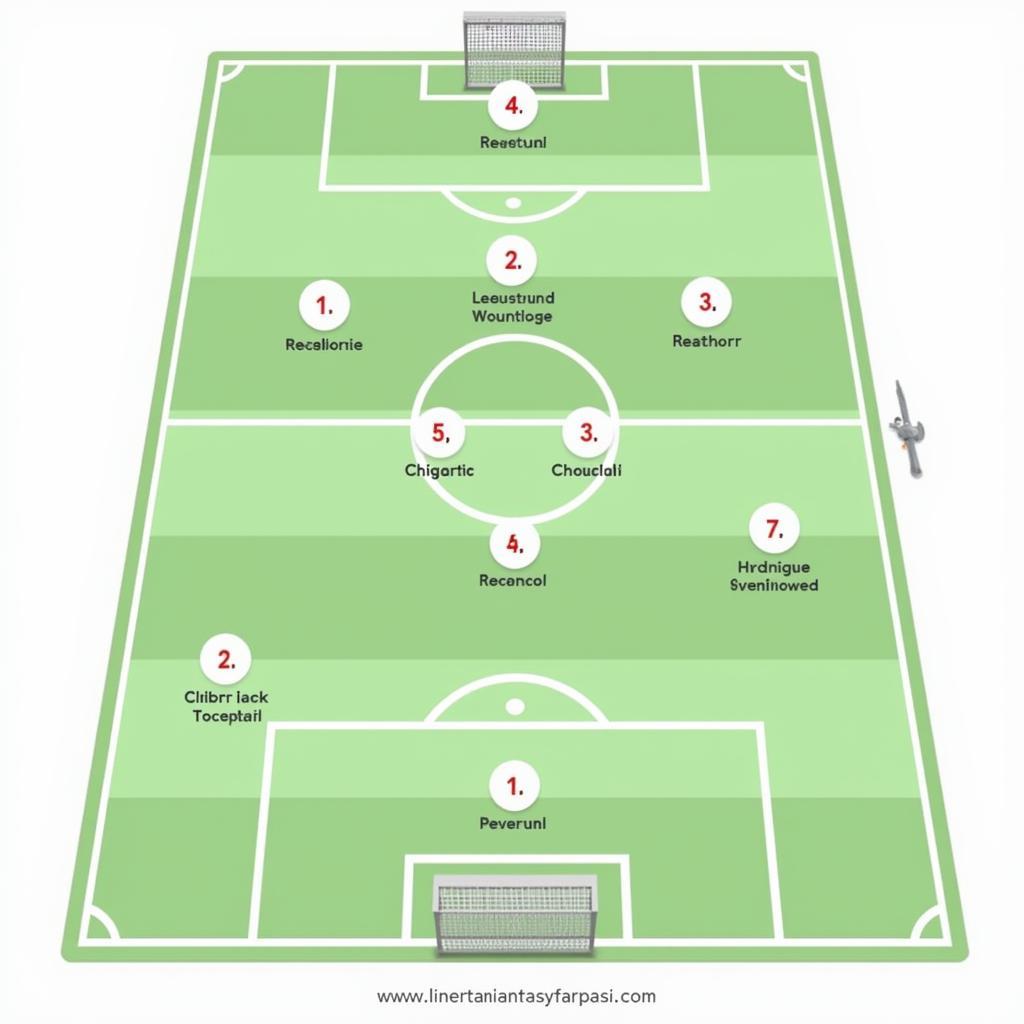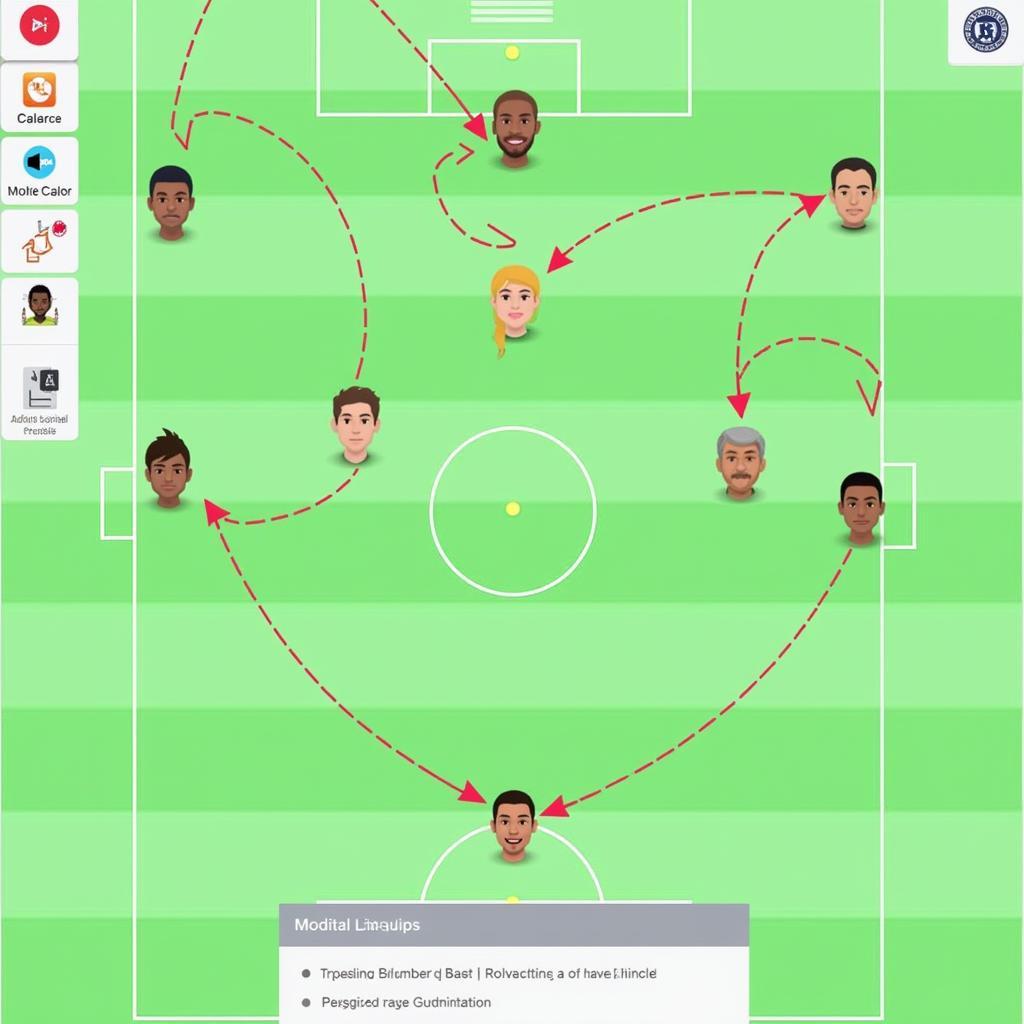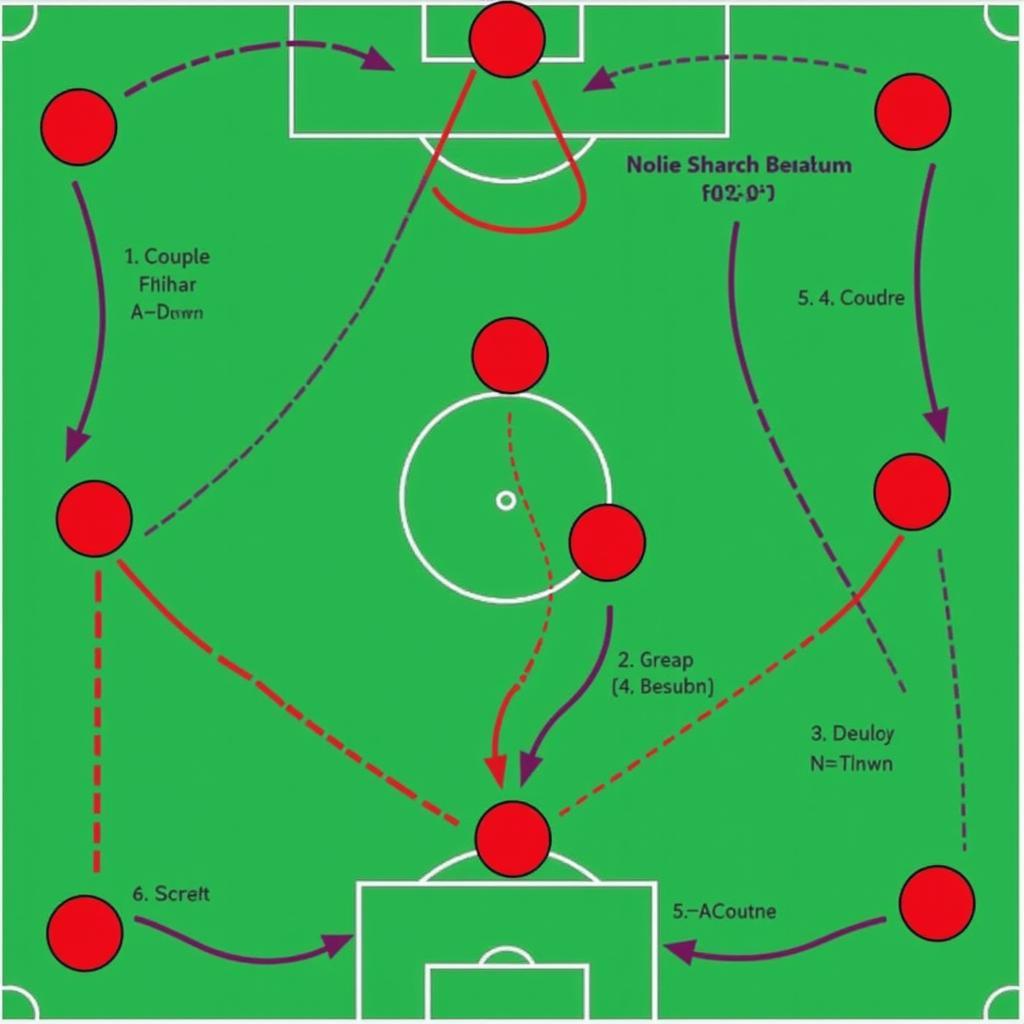A Football Lineup Template is a crucial tool for any coach or analyst, providing a visual representation of a team’s formation and player positioning. Understanding how to effectively use and adapt these templates is key to developing winning strategies. This guide will explore the intricacies of football lineup templates, from basic formations to advanced tactical considerations.
Understanding the Basics of a Football Lineup Template
A football lineup template typically depicts the field layout, marked with player positions for a specific formation. These templates can be used for pre-game planning, in-game adjustments, and post-game analysis. They allow coaches to communicate their tactical vision clearly to their players and analyze the strengths and weaknesses of their team and opponents.
Key Elements of a Football Lineup Template
- Formation: The template displays the team’s chosen formation, such as 4-3-3, 4-4-2, or 3-5-2, indicating the number of defenders, midfielders, and forwards.
- Player Positions: Each position on the field is clearly marked, allowing coaches to assign specific players to each role.
- Player Names/Numbers: Templates allow for the inclusion of player names or numbers, making it easy to visualize the lineup.
- Field Markings: The template includes standard field markings, such as the center circle, penalty areas, and touchlines.
Choosing the right formation is crucial and depends on the team’s playing style, player strengths, and the opponent’s weaknesses.
 4-3-3 Football Lineup Template Example
4-3-3 Football Lineup Template Example
Different Types of Football Lineup Templates
Various types of football lineup templates cater to different needs and levels of analysis. Some common types include:
- Basic Templates: These simple templates show the basic formation and player positioning.
- Advanced Templates: These templates may include additional features like player arrows indicating movement patterns, heatmaps showing player activity, and areas for noting specific instructions.
- Interactive Templates: Digital templates allow for easy editing and manipulation, enabling coaches to experiment with different formations and player positions in real-time.
Choosing the Right Template for Your Needs
Selecting the appropriate template depends on your coaching level and the depth of analysis you require. Basic templates are suitable for beginners and simple pre-game planning, while advanced and interactive templates are ideal for in-depth tactical analysis.
 Interactive Football Lineup Template Example
Interactive Football Lineup Template Example
Utilizing Football Lineup Templates for Tactical Advantage
Football lineup templates are not just for visualizing your team’s formation. They are powerful tools for gaining a tactical edge.
Analyzing Strengths and Weaknesses
By mapping out your team’s lineup on a template, you can identify potential strengths and weaknesses in your formation. You can also use the template to analyze your opponent’s lineup and exploit their vulnerabilities.
Communicating Effectively with Players
Templates provide a clear visual aid for communicating your tactical plans to your players. They help ensure everyone understands their roles and responsibilities within the chosen formation.
Beyond the Basics: Advanced Tactical Considerations
Once you’ve mastered the basics of football lineup templates, you can delve into more advanced tactical considerations.
Player Roles and Responsibilities
Clearly define each player’s role within the formation. For example, a central midfielder might have a primarily defensive role, while another might be tasked with creating attacking opportunities.
Player Movement and Passing Lanes
Use arrows and other visual aids on your template to indicate player movement patterns and preferred passing lanes. This helps visualize how your team will attack and defend.
“A well-structured lineup template is like a blueprint for success. It provides a framework for building a cohesive and effective team,” says John Smith, Head Coach at the prestigious Football Academy.
 Advanced Football Lineup Template with Movement and Passing Lanes
Advanced Football Lineup Template with Movement and Passing Lanes
Conclusion
Mastering the football lineup template is essential for any coach seeking to improve their team’s performance. By understanding the different types of templates, utilizing them for tactical analysis, and considering advanced concepts like player roles and movement, you can gain a significant advantage on the field. Football lineup templates are valuable tools for both pre-game planning and in-game adjustments, ultimately leading to more effective team performance and increased chances of victory.
FAQ
- What are the most common football formations? (Some of the most common formations are 4-3-3, 4-4-2, 3-5-2, and 4-2-3-1.)
- Can I create my own custom football lineup templates? (Yes, you can create custom templates using software or even by hand.)
- How often should I update my team’s lineup template? (You should update your template whenever there are changes in personnel or tactical approach.)
- What are the benefits of using digital football lineup templates? (Digital templates offer flexibility, easy editing, and the ability to integrate data and analytics.)
- Where can I find free football lineup templates online? (Many websites offer free downloadable football lineup templates.)
- Are football lineup templates only useful for coaches? (No, they can also be helpful for analysts, scouts, and even fans.)
- How can I use a football lineup template to analyze my opponent’s strengths and weaknesses? (By studying their formation and player positioning, you can identify potential areas to exploit.)
Common Scenarios
- Pre-season planning: Coaches use templates to experiment with formations and player roles, optimizing the team’s setup before the season starts.
- Opponent analysis: Templates help dissect the opposition’s typical lineup, revealing potential weaknesses to target during matches.
- In-game adjustments: During a match, coaches can use templates to illustrate tactical changes to players, helping them adapt to the flow of the game.
- Post-match analysis: Templates facilitate the review of past games, identifying areas for improvement in future matches.
Suggested Further Reading
- “Tactical Analysis: A Comprehensive Guide”
- “Understanding Football Formations”
For further support, please contact Phone Number: 0902476650, Email: [email protected], or visit our office at 139 Đ. Võ Văn Kiệt, Hoà Long, Bà Rịa, Bà Rịa – Vũng Tàu, Việt Nam. We have a 24/7 customer support team.





